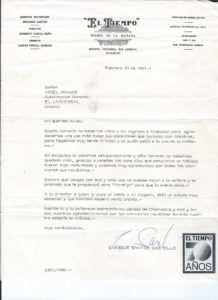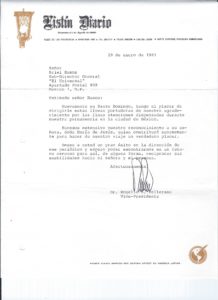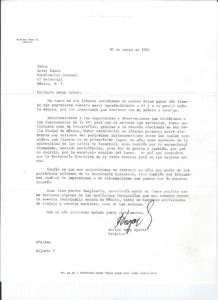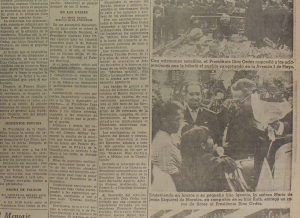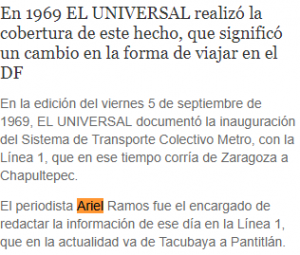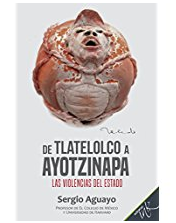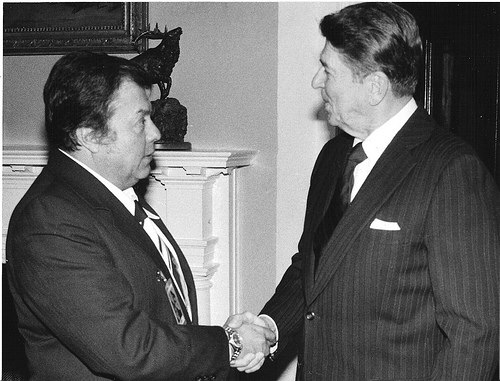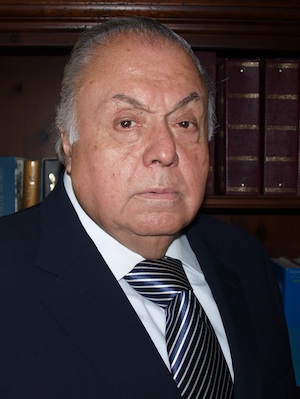 |
Luis Ariel Ramos was born in Mexico City in July of 1932. At the age of eleven and a half he began his journalism career when he became Don Gregorio Ortega’s assistant, then Director of ASI magazine and the most outstanding Mexican political analyst in history.
He worked as a photo archivist, crystal maker, accounts collector and advertising agent; in 1946 he worked under Don José Pages Llergo, Director of Hoy magazine. Years later, he worked in the tri-weekly ATISBOS, which was led by Don René Ca pistrán Garza, who as a young man was President of the ACJM (Mexican Association of Catholic Youth) and who beat the representatives of the Revolutionary Workers Confederation in a memorable oratory contest and was also exiled by the government of Plutarco Elías Calles. In May 19th 1957 he began his work at the editorial offices of EL UNIVERSAL, the legendary Mexican newspaper, as a reporter. In 1972 he became the Editor in Chief until his retirement. From that day on, was on permanent assignment at the newspaper, covering the arrival of the first Mexican Cardinal, José Garb Rivera, traveling with him from Mexico City to Guadalajara, were he was Archbishop. For 10 years, he accompanied Doctor Alfonso Caso, General Director of the National Indigenous Institute during the tours he took of the majority of Pre-Columbian areas of Mexican Mesoamerica. As a special correspondent, he covered the 1964 Assembly of the Organization of American States (OAS) during which it was agreed to block Cuba after a majority vote. |
In November of that same year, he accompanied Mrs. Eva Sámano de López Mateos during the inauguration of President Eduardo Frei Sr. in Chile. At Isla Negra he interviewed poet Pablo Neruda and in Santiago he interviewed Dr. Salvador Allende.One year later, he traveled to the Federal Republic of Germany covering different cultural, political and social events for three months in this great nation.He traveled throughout all the countries in Latin America interviewing the presidents of these nations (with the exception of Bolivia and Paraguay).In 1968 he witnessed the events of the student movement that was infiltrated from the beginning by the Red Unions, who provided financial backing and thousands of workers that participated in the marches that changed Mexico. As Sub-General Director of El Universal he led the removal of reporters who received juicy economic stipends from the sources they covered and promoted the arrival of new reporters who, with a new mystique and honesty, changed the face of the daily, which had been semi-paralyzed by the collapse of its circulation and the absence of its commercial advertising.In 1981 he was named Secretary-For-Life of the Advisory Board for Latin America at UPI (United Press International).
UPI – United Press International
Mr. Ramos was the executive President of ideas4solutions, a Latin American opinion organization. For the last eight years, he contributed the informative column about Mexico every Monday, until June 22, 2014 when he passed away. He will be missed! A few articles, books and comments mentioning Ariel Ramos; De Tlatelolco a Ayotznapa: Las violencias del Estado México Nueva EraIs impossible to describe/mention all the articles that ARIEL RAMOS wrote as a journalist, but we share some of them: 1) 2) 3) “Gigantesco mitin en el Zócalo. Muchos discursos pero ningún arreglo; insisten en sus demandas”, El Universal, miércoles 14 de agosto de 1968, p. 1” Ariel Ramos. (De Tlatelolco a Ayotzinapa, Las violencias del Estado – Pág. 61). 4) 6) México 68. The students, the president and the CIA. 7) Hace 50 años |
|
